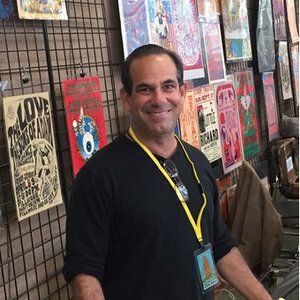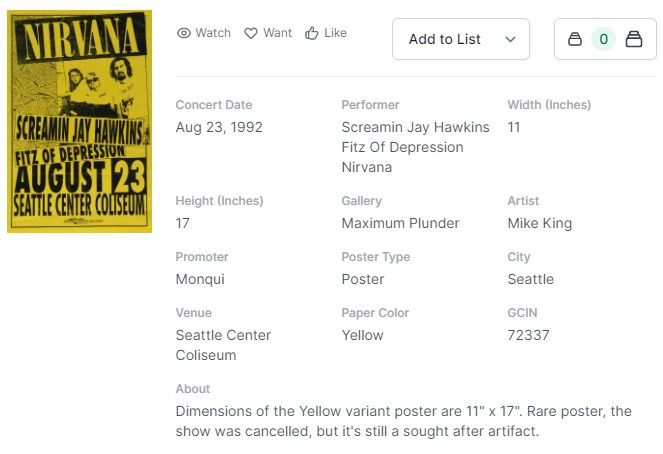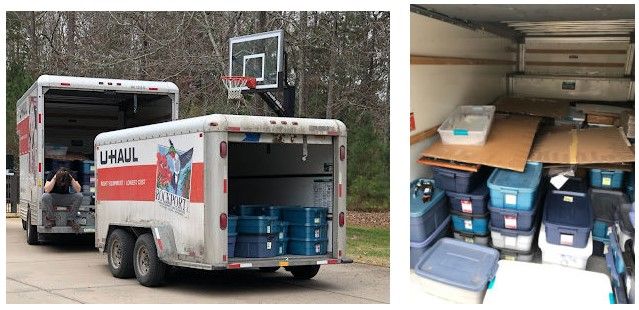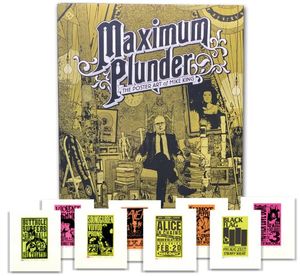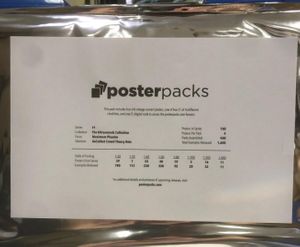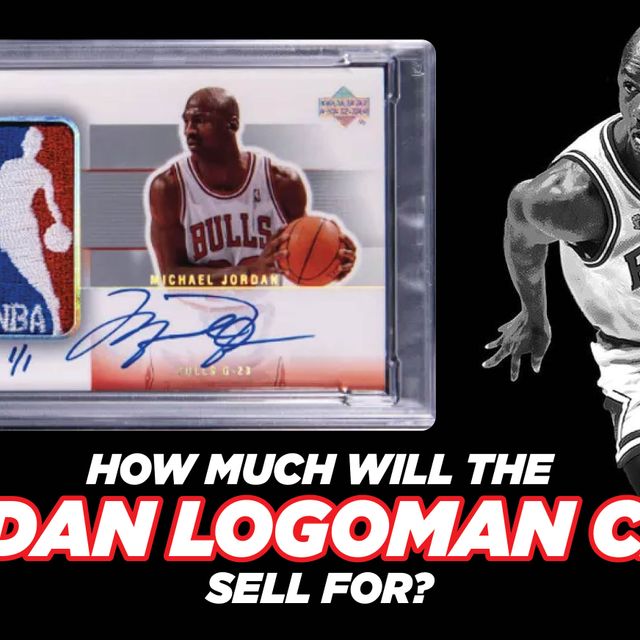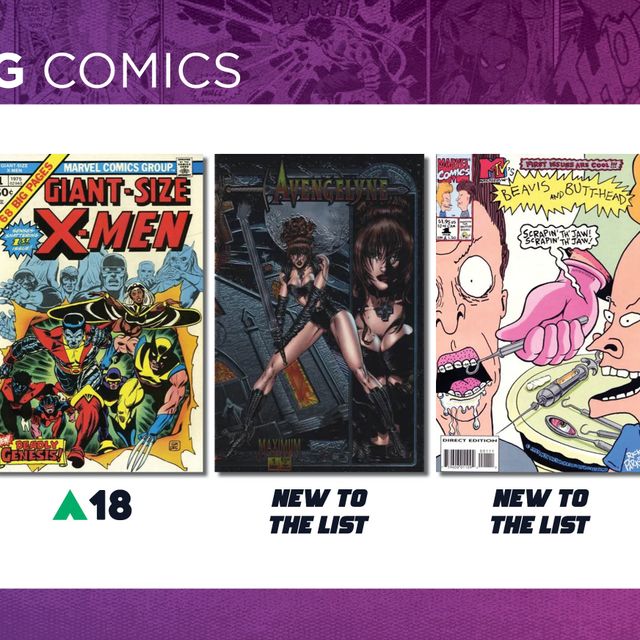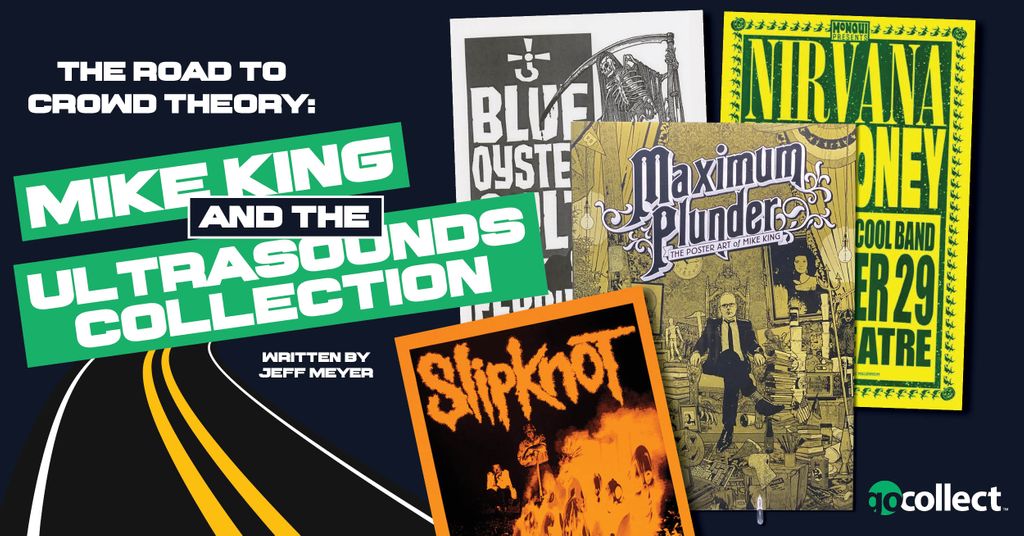
In 2019, the GoCollect Comic Book Price Guide was up, running, and displaying the most reliable and verifiable cache of graded sales data out there. Now that ground had been broken through comics, the company was ready to expand into other graded collectible categories.
As I was researching lobby cards on CGC’s website I came across the mention of certified concert posters, and something clicked.
Concert Posters.
Everyone can feel nostalgia toward concert posters, right? Seeing a poster from a show you saw in your youth can bring you right back to that darkened auditorium, hearing the roar of the music. Music is ingrained in our history - the soundtrack of our lives. Concert posters looked to be the perfect emerging market for GoCollect to dive into next.
My next step was to immerse myself in the world of concert posters. Similar to comics, there were iconic poster artists, styles, and eras to take in. Watching what came to auction was helpful, but one thing soon became apparent - There seemed to be an endless number of amazing posters out there, but the sources for history and reliable information were disparate and not always well documented.
In order to list these collectibles in something close to a Price Guide, much would need to be researched and recorded. The best way to become an expert in something is to step into someone else’s shoes, so I started buying everything I liked and put out feelers geared toward purchasing a collection of my own.
Finding the Ultrasounds Collection
During my early educational period, I became acquainted with my now dear friend, Glen Trosch, owner of Psychedelic Art Exchange. It was one of Glen's customers who set in motion the chain of events that would end in my acquisition of the Ultrasounds Collection.
I was told of a legendary collector who was living out a 30+ year quest to build the most complete archive of concert posters from a few key geographic regions - focusing on those of the Pacific Northwest from the late 1970s through the early 2000s. I was told it featured posters that promoted shows from historically important bands of the era including Nirvana, Pearl Jam, Soundgarden, Alice in Chains, The Ramones, and countless others.
No stone was left unturned in the original collector’s quest to unearth the rarest and finest specimens, carefully storing to maintain the condition of each acquisition. Much of the work in the collection was designed by the concert poster artist, Mike King.
“King, a native of suburban Portland, is widely considered to be the most prolific poster artist in the history of the United States, having created over 6,000 posters. Like the bands featured on his posters, King is unquestionably the most important concert poster artist of the era, and his works are highly sought after amongst collectors.” -Psychedelic Art Exchange
It didn’t take much carrot-dangling for me to be convinced to make the voyage to Vermont to see this collection for myself.
Over the River and Through the Woods...
In the mountainous woods of the North East, up a secluded drive, in an off-the-grid pair of homes, you may not expect to find a vast collection of vintage concert posters, yet that’s exactly what I found when I got there. The collection owner (who prefers to remain anonymous) welcomed me in, confirmed that he was open to selling, and began showing me some of the pieces he’d treasured for years.
Within 30 minutes of looking and listening, I knew I had to own this collection. Yes, it was 100,000+ posters, of which I’d only seen a fraction. Yes, the collection was a guesstimated 14,000 pounds. Yes, the posters were in Vermont and I lived in Charlotte, NC. And yes, I pulled the trigger and bought the whole damn thing. Yes, it was very expensive, but No - I can’t share what I had to pay. Let’s just say it would be considered a substantially life-changing amount by more than 99% of the people in the US - and I was grateful to have the opportunity to make the purchase.
The owner and I found common ground when it came to our intentions behind the collection. It wasn’t about making a profit from posters; these were accumulated in order to be archived and documented as a sort of library of music history. It was the perfect fit for me to purchase the collection and loan it to GoCollect for archiving and continued research. The collector suggested naming it the Ultrasounds Collection as an homage to a mentor of his. It was officially named from that point forward :)
After a great deal of effort and immeasurable willpower from my friends, the collection finally made it to its new home in Charlotte.
After finally pulling into my driveway, I quickly realized the true enormity of what I’d bought.
As I began to take meager steps toward going through the dozens and dozens of bins, word had already gotten out that the Ultrasounds collection had been relocated. Requests to purchase individual items began to land in my lap and I realized I’d put myself in the position of inventory-holder/seller, a title I hadn’t intended to hold.
Before anything could be sold or disbursed, the collection needed to be archived.
Maximum Plunder
Archiving the posters was difficult for many reasons, not the least of which was the lack of information available. Concert posters generally have no years printed on them, which made just finding the years of the shows an effort. Then, a godsend. I came across the treasure trove of pages called Maximum Plunder, written by Mike King and Paul Herring.
Within these pages were posters many collectors had never known existed. Most of the telephone pole posters from the Pacific Northwest were created in quantities of around 300, as the venues were relatively small. The majority of the posters were stapled or pasted to poles in an attempt to sell out tickets. For many performances, surviving copies were few and far between, and Maximum Plunder contained a trove of backstories and inspiration from the creator himself. This was the jumpstart we needed in order to start archiving the Ultrasounds Collection. The problem was, copies of Maximum Plunder were sold out and hard to find. The book had become a collectible item itself, due to its original 500-copy print run nearly selling out within the original funding campaign to get it printed.
I was lucky enough to get in contact with both authors over a three-way call where I asked when they were going to produce more copies of the book. Challenges were shared and ideas were exchanged. In time, I made the decision to purchase the rights to the book and have it reprinted as a fun project for the team at GoCollect. I’m happy to report that the second printing of 1,000 copies is now available for would-be collectors or anyone curious to peek into the historic streets of the eighties and nineties around Portland and Seattle.
Mike King, meet CGC

The King, Mike King, that is, made the pilgrimage to Charlotte, NC to see the collection for himself. He was able to verify his work and give backstories otherwise lost to time - even to see some posters that he’d thought he’d never come across again.
It was during this time that CGC was able to visit GoCollect’s Charlotte office to inspect both the collection and its provenance. CGC is the first grading company to officially recognize the massive assembly of posters as the Ultrasounds Collection. CGC accepts submissions for all of the concert posters showcased in Maximum Plunder and now has the ability to expand submissions into a wider range of verifiable posters, should the demand exist.
Releasing posters to collectors
As GoCollect is done archiving each poster, I have to figure out whether I want to add it to my personal collection or release it. I usually save up the collectible items I want to release and consign them back through various specialty auction houses. You’ve seen me do it with video games and rare concert posters were next in line. This gives GoCollect both an archived collectible item and often its first legitimate baseline sale to bootstrap the valuation process. Because of the benefit GoCollect receives, it gives me the personal freedom to release many early-to-market goodies via auction at once without the concern of generating profit.
It was becoming more and more clear that finding the proper way to release these posters would be more complicated than a handful of focal auctions. It took around 1,000 different video games to be sold to baseline that market, but doing the same for concert posters will take at least 10x-20x that amount.
I knew I wanted to get these posters into the hands of collectors, but what was the best way? There’s a responsibility in making sure that they’re available to the widest audience possible. There’s also a responsibility of overseeing a company (GoCollect) that can report on unbiased information around the financial markets of collectibles.
An unintentional monopoly
In the collection of 100,000+ posters, an estimated 30,000 - 40,000 of them were unique. There were many multiples, dozens of the same poster at times. Surely, this was normal. If I had a handful of copies of MXP-35.2, then other collectors must have as many, if not more, right?
Wrong.
When a concert poster is printed for an event, the total number of copies printed usually correlates to venue size. A venue with a capacity of a couple hundred people wouldn’t need more than 200-300 posters printed to promote the event. Several venues in the Pacific Northwest were small and exclusive. Those ten posters I’m holding? They may be all (or most) that are known to still exist in file copy condition.
It soon became apparent that I had unintentionally purchased somewhat of a monopoly of the most sought-after concert posters of the Pacific Northwest. It’s now become a personal mission to find a way to distribute these to collectors who want them, but this leads to a huge dilemma. The majority of the Ultrasounds posters have little to no secondary market sales history. And massive user marketplaces like eBay and Etsy have created challenges due to various forms of copies being sold that were not originally printed for the show.
Crowd Theory is born
What is this collectible worth? The answer is always the same; it’s worth whatever someone's willing to pay for it. That’s why GoCollect has always relied on transparent and auditable information to estimate the fair market values of various collectibles.
Various copies of original, 11x17 telephone pole posters do sell at various auction houses that collectors trust. But there’s no reliable sales history across a wide enough spectrum of interest to begin GoCollect’s multifaceted process of estimating values. That’s a problem GoCollect needs to solve to effectively support the emerging collectibles markets of the future.
GoCollect’s tech team put their noses to the grindstone and is very excited to debut Crowd Theory to the pop culture collectors of Portland on February 17-19, 2023. The initial release of this tech allows people to share their opinion by estimating the sticker price they would guess to see if the poster was for sale in their local collectibles store.
The attendees at the comic book convention in Portland can access Crowd Theory through QR codes attached to individual posters in GoCollect’s large exhibit at the show. Participants will be able to see the estimates of others (after sharing their own) for well over 100 different posters on display. There will be seven GoCollect team members on hand to gather additional information to take back to our data analysts so that we can share their findings soon.
Portland - A fun next step
Our entire weekend in Portland will be treated as a celebration of a musical era in the Pacific Northwest, growing from the punk counterculture of the seventies into the now infamous birthplace of what mass audiences refer to as Grunge music. We’re bringing Portland’s posters home to the place it all started, each outfitted with a Crowd Theory QR code.
We are also honored and thrilled to announce that we’ll be hosting Mike King at our booth. After 20 years, he’s coming back to Portland. He'll be signing autographs (first one free, charge for each additional). By my estimate, Mike King’s impact as an artist on this concert poster collecting niche is unparalleled (by a landslide). I am sincerely hopeful that people will take the time to come say hello to a local icon.
In order to drive interest for Crowd Theory’s debut and spread awareness of the concert poster collecting hobby, I’ve decided to pack up a special grouping of concert posters from the Ultrasounds collection and release them to attendees of the Portland convention. Each day, the GoCollect booth will release 100 packs of original concert posters from the Ultrasounds collection to attendees (limit 2 per household). Each pack contains 4 posters. Each poster comes in an 11x17 toploader that has a sticker on the back with extra information and a QR code linking to its Crowd Theory page.
I believe I’ve responsibly priced these packs at $100 each, estimating the overall market value of the offering to be far greater than $25 per poster. Each of the 160 different posters packed comes from Mike King’s book - Maximum Plunder. CGC will have a Signature Series witness on hand to authenticate any poster King signs, while accepting concert poster grading submissions directly from the GoCollect booth. There is a relatively tiny population of concert posters CGC grades from the modern music era and most are on the pages of Maximum Plunder. I’m hopeful many of the collectors purchasing these will take the next step to awareness by continuing to recirculate them.
Continuing the conversation
The team at GoCollect has set up a special forum dedicated to the folks that are able to purchase the posters - posterpacks.com. I’ve personally seeded the forum with findings from my journey through street flier-style concert posters and the Ultrasounds collection. I’ve posted the 160 posters available and the odds of finding each.
If collectors embrace this concept, I intend to transparently release the entire Ultrasounds collection, leaving only a reference collection of unique examples in my possession. From that point, I can release large portions of the reference collection via specialty auction venues to assist the market in assigning value until I’m down to my personal favorites. My goal is to maintain dignity among my other collections by allowing myself to keep far fewer than 1,000 in the end.
What do you think about Crowd Theory and the Ultrasounds Collection?
Let us know in the comments!

